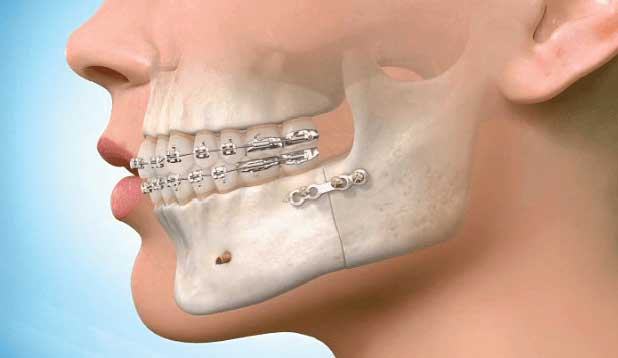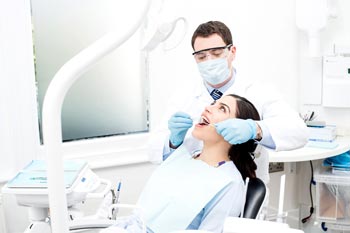Everything You Need to Understand About Braces, Aligners, and Retainers
Orthodontic treatments such as braces, aligners, and retainers play an essential function in accomplishing a straighter and healthier smile. Each of these orthodontic appliances serves a particular function in remedying oral imbalances and attack issues. From typical braces to modern aligners, there are various options available to deal with individual demands and preferences. Comprehending the distinctions, benefits, and upkeep requirements of these orthodontic tools is necessary for any person considering boosting their oral placement. The journey to a completely lined up smile includes greater than just aesthetic appeal; it impacts overall oral health and wellness.
Kinds of Orthodontic Therapies
Orthodontic treatments incorporate different techniques targeted at fixing and lining up teeth for improved oral health and wellness and looks. The most usual kind of orthodontic treatment is typical braces, containing metal braces adhered to the teeth and connected by cables. These braces gradually shift teeth into the wanted position through regular modifications by an orthodontist.
Another popular alternative is ceramic dental braces, which are less obvious than metal braces because of their clear or tooth-colored braces. Lingual dental braces are affixed to the rear of the teeth, making them practically unnoticeable from the outside. For those seeking a much more very discreet alternative, clear aligners like Invisalign give a transparent and detachable choice to traditional dental braces.

Pros and Disadvantages of Dental Braces
When thinking about orthodontic therapy alternatives, it is necessary to evaluate the advantages and drawbacks of dental braces. Dental braces are highly effective in dealing with a variety of oral concerns such as uneven teeth, congestion, misalignment, and attack issues. Among the primary advantages of braces is their dependability in supplying foreseeable and precise outcomes over a specified treatment duration. They are additionally appropriate for people of every ages, making them a flexible alternative for orthodontic care. In addition, dental braces can help boost dental health by enhancing the positioning of teeth, which can minimize the threat of tooth degeneration, gum tissue condition, and various other oral troubles over time.
Another aesthetic consideration is the visibility of typical steel braces, which may affect the user's confidence throughout therapy. In spite of these disadvantages, the tried and tested efficiency of dental braces in attaining ideal oral alignment commonly outweighs the cons for lots of clients.
Benefits of Aligners
A significantly preferred option to typical dental braces, aligners provide many benefits in orthodontic treatment. Aligners are likewise detachable, permitting clients to quickly comb and floss their teeth, leading to far better oral hygiene throughout therapy contrasted to standard braces.
Moreover, aligners typically call for fewer brows through to the orthodontist for changes, as contrasted to dental braces, which can be a hassle-free aspect for people with hectic routines. The treatment process with aligners is often more comfy, as there are no metal brackets or cords that might cause irritation to the mouth. Additionally, aligners can usually attain cause a shorter time framework than conventional dental braces, depending upon the complexity of the orthodontic problems being addressed.

Importance of Retainers
The value of retainers in maintaining orthodontic therapy results can not be overstated. Retainers play a critical duty in protecting the results achieved via aligners or braces. After the initial phase of orthodontic therapy, where dental braces or visit site aligners are made use of to align teeth and correct bite concerns, retainers are necessary for stopping the teeth from shifting back to their initial position.
Retainers aid to support the teeth in their brand-new lined up position, enabling the supporting frameworks in the mouth to adapt to the adjustments. Without correct retainer wear, there is a risk of regression, where the teeth progressively return in the direction of their pre-treatment positioning. This can undo all the progress made during the orthodontic treatment, bring about the need for added treatment.
It is recommended to put on retainers as routed by your orthodontist to keep the outcomes of your treatment in the long-term. Normally, retainers are initially used full time and after that transitioned to nighttime wear once the orthodontist identifies it is suitable. Constant retainer use is key to ensuring a lasting, beautiful smile.
Maintenance Tips for Orthodontic Equipments
When using braces, it is crucial to maintain excellent oral hygiene by brushing after every dish and flossing everyday to protect against plaque accumulation. Avoiding hard, sticky foods can additionally protect against damage to the braces.

Final Thought
In final thought, orthodontic treatments such as aligners, retainers, and braces play a critical function in dealing with oral issues and enhancing overall dental health. Each therapy option has its own advantages and disadvantages, and it is very important to comply with correct upkeep pointers to make certain the effectiveness of the devices. Whether it is braces for much more severe situations or aligners go to my blog for an extra very discreet like it option, talking to a dental professional will certainly help figure out the very best treatment plan for specific needs.
Orthodontic therapies such as aligners, retainers, and dental braces play a vital role in achieving a straighter and healthier smile.Another preferred option is ceramic braces, which are less noticeable than steel dental braces due to their tooth-colored or clear brackets.In some instances, after dental braces or aligner therapy, retainers are essential to maintain the freshly aligned position of the teeth. After the initial phase of orthodontic treatment, where aligners or braces are made use of to straighten teeth and proper bite problems, retainers are important for stopping the teeth from shifting back to their initial placement.
In final thought, orthodontic therapies such as retainers, braces, and aligners play a crucial function in remedying oral problems and boosting overall oral health and wellness. - orthodontics